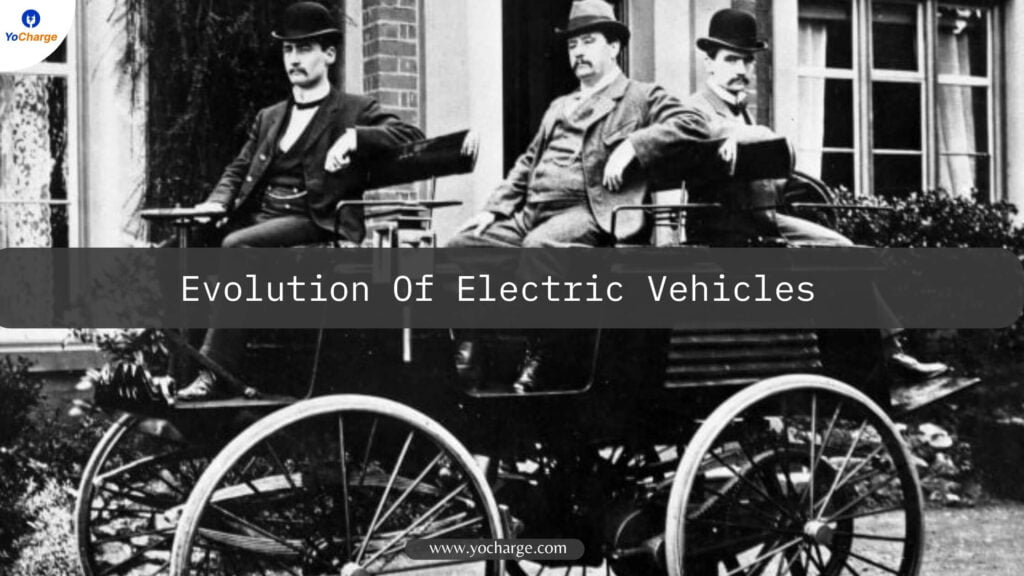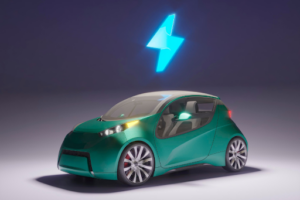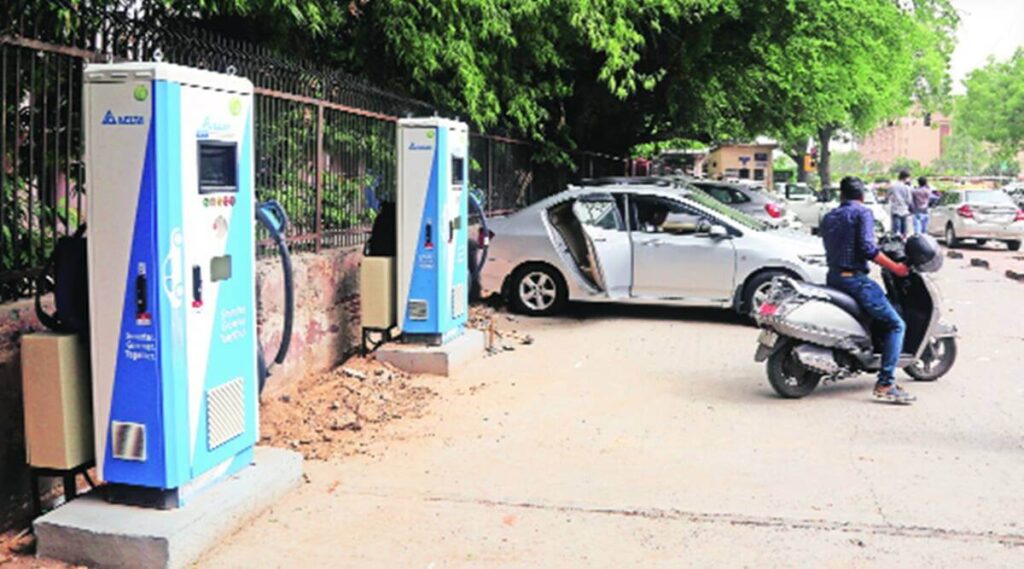
The evolution of electric vehicles (EVs) has been a long and fascinating journey that dates back to the early 19th century. Despite the early prototypes, it was only in recent years that EVs gained widespread attention and adoption. A range of factors, like technological advancements, shifting consumer attitudes, and government policies aimed at reducing emissions and promoting sustainability, have influenced the progress of EVs. Rapid technological advances, changing consumer attitudes, and government policies aimed at reducing emissions and promoting sustainability have marked the evolution of EVs from early prototypes to modern-day marvels. In this blog post, we’ll take a closer look at the history of EVs and how they have evolved.
Story of the Evolution of Electric Vehicles:
The evolution of electric vehicles (EVs) began in the late 19th century when inventors and engineers first started exploring using electric motors to power vehicles. One of the earliest examples of EVs was the “La Jamais Contente,” a French electric car built in 1899. This vehicle set the world’s first land-speed record for an electric vehicle and showcased the potential of electric power. However, despite these early innovations, EVs remained a niche product for much of the 20th century.
The main reason for this was the limited range and slow charging times of the batteries used in early EVs. These limitations made them unsuitable for widespread use, as people required vehicles that could travel longer distances without needing regular stops to recharge. Additionally, the internal combustion engine, already well-established and widely used, was a more practical option for most consumers at the time.
Despite these challenges, the idea of EVs never entirely disappeared, and research and development continued throughout the 20th century. As battery technology improved and the demand for more sustainable transportation options increased, EVs began to gain traction, setting the stage for the exciting developments we see today.
Rise of Hybrid Vehicles:

The late 90s and early 2000s marked the emergence of hybrid vehicles, which combined a traditional internal combustion engine with an electric motor. These vehicles aim to improve fuel efficiency and reduce emissions compared to conventional cars. The electric motor was powered by a battery charged by regenerative braking and the internal combustion engine. This motor allowed the vehicle to run in electric-only mode at low speeds or during periods of low load, resulting in improved fuel efficiency.
Hybrids also represented a step forward in terms of emissions, emitting fewer harmful pollutants into the atmosphere. The growing public concern about climate change helped drive hybrids’ popularity, leading to increased investment and development in the field. Despite limitations such as complexity and high cost, the popularity of hybrids continued to grow, representing a critical step in the development of the modern-day electric vehicle.
Re-emergence of Pure Electric Vehicles:

The mid-2000s saw a resurgence of interest in pure electric vehicles, driven by advancements in battery technology and growing concerns about climate change and energy security. Automakers, including Tesla, Nissan, and Chevrolet, took the lead in developing and launching all-electric vehicles with longer driving ranges and a more sustainable alternative to traditional vehicles. Despite initial challenges, such as limited driving range and a scarcity of charging infrastructure, these early EVs started to gain popularity among consumers, spurring increased investment and innovation in the field.
As technology continued to advance, the range of electric vehicles increased, and the charging infrastructure expanded, transforming EVs to be more accessible and convenient for consumers. Governments also played a role in the growth of the EV market by offering incentives, tax credits, and building public charging networks. Today, EVs are becoming increasingly popular, offering consumers a more sustainable, environmentally-friendly option for transportation.
In short, the mid-2000s marked a crucial turning point in the evolution of electric vehicles, with the development of all-electric vehicles that offered longer driving ranges and a more sustainable alternative to traditional vehicles. A combination of technological advancements, consumer demand, and government support has driven the growth of the EV market. With continued innovation and investment, the future of EVs is looking brighter than ever, offering consumers a greener, more sustainable option for transportation.
Recent Developments:

In recent years, the EV market has grown and evolved faster. Advances in battery technology have allowed for longer driving ranges, faster charging times, and lower costs, making EVs more accessible and appealing to a broader range of consumers. Governments worldwide have also increased their efforts to promote EVs, offering incentives, tax credits, and other programs to encourage adoption. In addition, a growing network of charging stations and public charging networks has helped address some initial concerns about range anxiety and charging accessibility.
Conclusion:
From early prototypes to modern-day marvels, the evolution of EVs has been a story of rapid advancements, changing consumer attitudes, and government support. Today, EVs are increasingly seen as a viable alternative to traditional vehicles. Their continued growth and development will play an essential role in shaping the future of transportation and energy.
Today, the development of electric vehicles has come a long way, with advances in battery technology allowing for longer driving ranges, faster charging times, and lower costs. The growth of the EV market has been facilitated by government support, including incentives, tax credits, and public charging networks. The future of EVs is looking brighter than ever, with more and more consumers opting for sustainable, environmentally-friendly transportation options.



